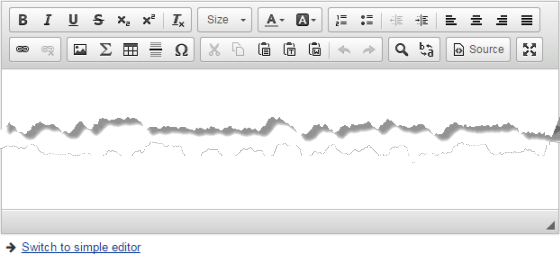Create or edit a question for Learning Catalytics
Updated 11 Sep 2025
You can create or edit a question in the Learning Catalytics question library, and then add that question to any module.
- You can copy and edit a community-contributed question.
- You can't edit a question provided by Pearson.
You can also copy or move existing questions from one module to another, including to a module in a different course. See the procedure Copy or move questions from one module to another for details.
Take a look at suggestions for designing good questions, and become familiar with the many question types available for Learning Catalytics.
- In the top navigation bar, click Questions.
- Click Create a new question.
- Select the Question Type for the new question.
As you point to each question type, you see a description of what students see and how they must respond to that type of question.
Note: Some question types can be automatically scored; others must be scored by hand. The following question types are automatically scored: direction, expression, many choice, multiple choice, matching, numerical, priority, ranking, and region.
For more information, see Learning Catalytics scores and Learning Catalytics automatic and manual scoring. - From Discipline, select a subject area for the question; this will help you locate the question in the future. For some disciplines, you can also select a Book.
- In the Prompt editor, enter the text of the question. A prompt is required for all question types except Slide. (Even for a Slide question, you might include a prompt to help you identify the question.)

Format the text as usual. For math, click
 to enter LaTeX and see the expression rendered as students will see it in the question. You can also switch to entering plain text by selecting Switch to simple editor, then use Markdown, HTML, and LaTeX for formatting.
to enter LaTeX and see the expression rendered as students will see it in the question. You can also switch to entering plain text by selecting Switch to simple editor, then use Markdown, HTML, and LaTeX for formatting. - For questions that include a background image (Direction, Region, Sketch, or Composite Sketch), do not add an image using this editor. Select Add Images and select an image from your computer or a network location.
For more information about image formats, file sizes, and display sizes, see image guidelines. - In the Options section, instructions vary according to the Question Type (format). See Options for different question types for details.
Tip: For most Question Types, be sure to point to Sample results for a question in this format to see an example that is a bit larger than the similar thumbnail you select at the top of the page.

[Optional] Sharing and Copyright: Select the check box to make the question available to other instructors; edit the attribution message.
[Optional] Tags: Enter content tags that you and others can use later to locate this question.
When you click in the Tags box, you see an alphabetical list of tags that have been applied to questions in the discipline you selected for the question. You can scroll to select tags from this list, start typing to see if the list contains matches for the characters you enter, or continue typing and press Enter to add a new tag. Select or add as many tags as you'd like, and click x to remove any tag you don't want to save.
[Recommended] Answer/Explanation: Enter the correct answer or an explanation. Students will see this when they review the question after class, or after exhausting their attempts in a Team-Based assessment.
[Optional] Notes: Include notes for yourself and other instructors; notes are never shown to students.
Select Save & Preview or Save.
- In the top navigation bar, click Questions.
- Use filters on the Questions page to find the question, and then click the question in the results list to display the question, answer(s), explanation, and sharing settings.
- Select Copy.
- In the Edit question window, make changes in any of the fields used to add a new question (see above).
In particular, if you make a significant change, you might want to change the check box and attribution message in the Sharing and Copyright field.
-
In the Describe change box, at the bottom of the window, consider adding information about the changes you made. This note appears in the annotated list when you display the list of previous versions of the question.
When you open a question that has multiple versions, select Previous versions to see an annotated list of versions of the question.
- Click Save & Preview or Save.
Do one of the following:
- At the end of adding a question, click Save & Preview.
- Use filters on the Questions page to find the question, and then click the question in the results list to display the question, historical performance, answer, and other information.
You can ask a new question at any point during a session for an Instructor-Led Synchronous module.
- Open the course and the module.
- Click Start session.
- Click + Ask a new question on the fly in the upper right of the instructor dashboard.
-
Select a Question Type, Discipline, Prompt, and any other fields required for the type of question you are creating.
Keep in mind that you can edit this question later if you want to keep it for future use. You might want to add information such as feedback (which students see when they review the session), tags, or notes.
- Click Deliver.
- Filter to find the question to delete.
- Select the question in the results list to open it.
- Select x Delete near the top of the page, and then select OK to confirm the deletion.